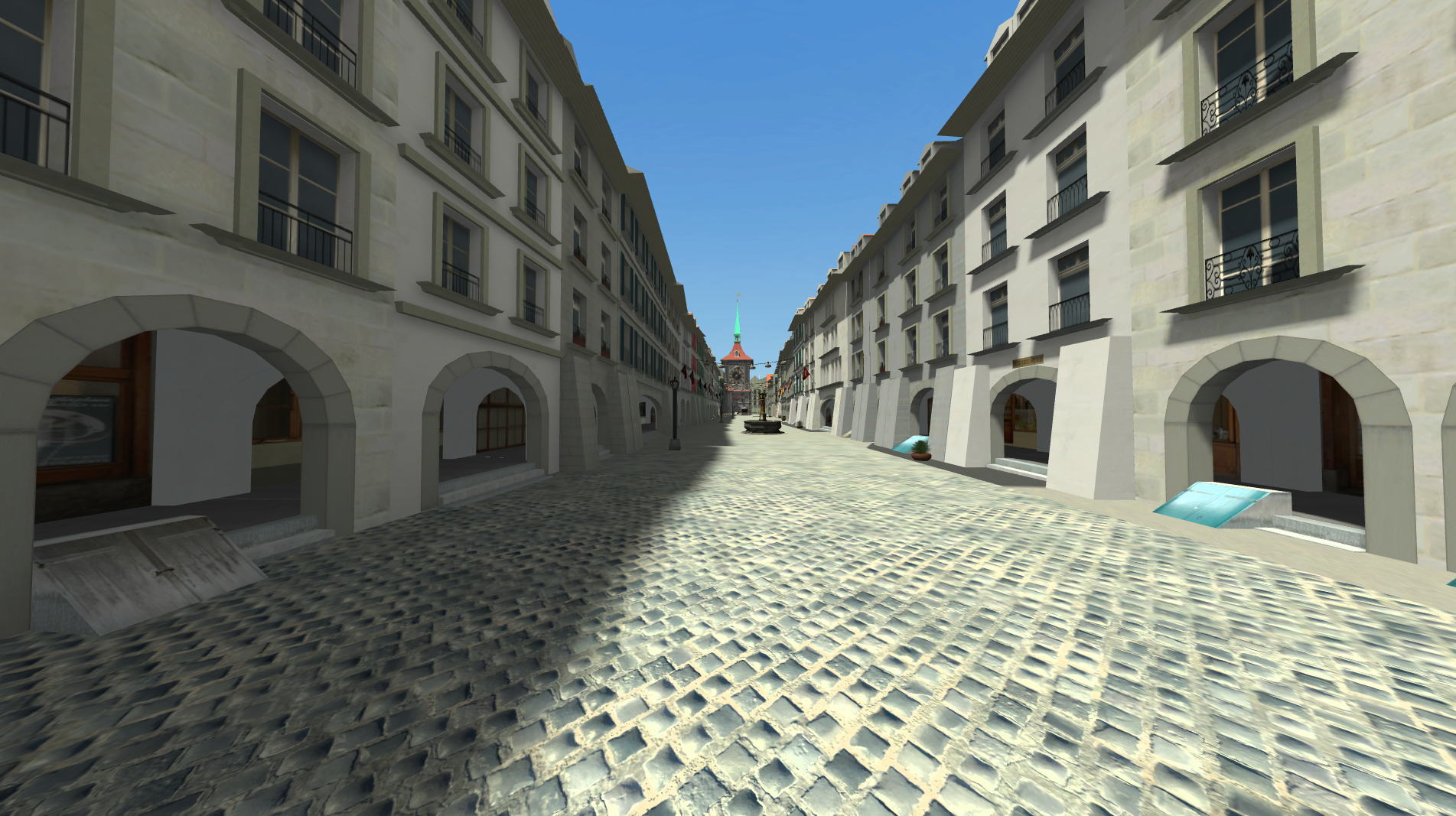MIT Game Lab | Programmer
At MIT Game Lab, I worked on a special relativity simulator known as "Einstein's Playground.” The project
was developed to be shown across planetariums to educate people on the effects of relativity. The user could
move around this virtual world and see real effects, including doppler effects and length contractions.

The simulator was made within a game engine called Unity. Our team made major modifications to the original version of Einstein's Playground.
The OpenRelativity library was used and modified to support more graphics cards. For instance, using a 1060GTX, I increased the framerate
from 30fps to 130fps on the Boston scene. Additionally, modeling and scripting was done to introduce the Bern Scene
(Bern is where Einstein worked as a patent clerk) to be used by all planetariums.
I am proud of the contributions I made by introducing shadows to the relativity shader.
Here are photos of how the game looks before and after these modifications.
Scripting was done in C#, while shading was done in a language called ShaderLab (a mix of HSGL and CGX).
New classes were introduced into the game for features, so I used a lot of object oriented programming.
Einstein's Playground was a very fun project to work on!
Technologies Used
- C#
- Unity Game Engine
- HLSL/CG/ShaderLab
- Blender
BAE Systems | Technical Intern III
At BAE Systems, I worked on creating software test tools for embedded systems on aircrafts.
My internship consisted of developing from scratch a software test tool that could be easily used by professionals.
It consisted of a GUI layer that was written in .NET WPF with telerik tools and an additional backend tool that was completely written in C++.
On this backend, I worked a lot with client/server sockets to create a distributed test tool.
When I came out of the internship, I gained a lot of .NET WPF experience.
This was different from my last experience (Einstein's Playground) since I actually used C# with Microsoft Visual Studios.
Also C++ is a lot easier than I once thought!
Technologies Used
- WPF .NET
- C#
- C++
- Socket communication
- Microsoft Visual Studios
- MVVM
MIT LNS - Laboratory of Nuclear Science
During my first summer at MIT, I was considering a double major in Physics and Computer Science.
I would eventually realize that I did not have enough time for Physics. This experience reflects on that consideration.
My task for this research project was to identify beauty and charm particles though statistical methods, mainly through the use of fitting histograms to Gaussians and Poisson distributions.
All the fitting was done by using C/C++ and CERN's library of statistical tools called ROOT
Towards the end of the summer, I learned a bit about neural networks and attempted to use it to determine charm/beauty particles.
The training was not as successful as I had hoped, but I learned something out of it.
Technologies Used
- C++
- Cern's ROOT package
- Python

